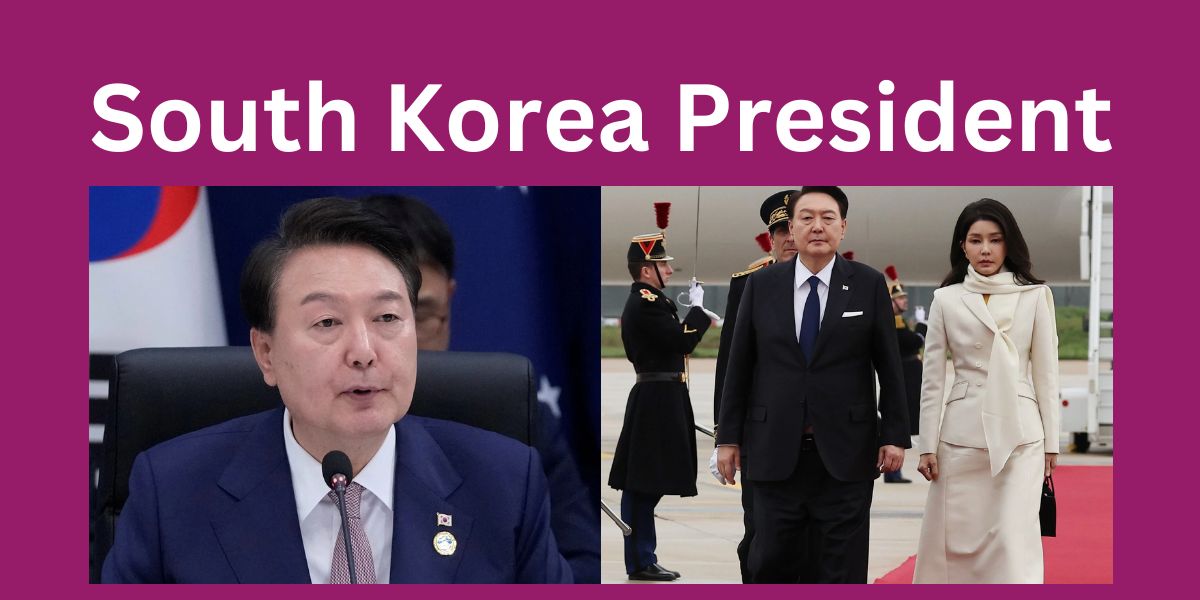South Korea is a nation known for its vibrant culture, technological advancements, and fascinating political history. At the helm of this powerhouse lies its president, a figure who plays a crucial role in shaping not only the country’s domestic policies but also its standing on the global stage. But what does it mean to be the president of South Korea? Let’s dive into the details.
Who is the South Korea President?
The president of South Korea is the highest-ranking official in the country and serves as the head of state and government. Elected by the people, the president oversees a range of responsibilities that include governance, international relations, and upholding the constitution.
Current South Korean President
Meet the Current Leader
The current president of South Korea is Yoon Suk Yeol, who assumed office on May 10, 2022. A former prosecutor with no prior political experience, Yoon’s rise to power was remarkable, capturing the public’s imagination with promises of reform and justice.
A Brief History of South Korea’s Presidential System
How It All Began
South Korea’s presidential system was established in 1948, following the end of Japanese occupation and the division of the Korean Peninsula. Syngman Rhee was the first president, setting the stage for a new era of governance.
Evolution Over Time
Since then, South Korea has undergone dramatic changes, shifting from military rule to a thriving democracy. The system has been shaped by challenges, including corruption scandals, impeachment cases, and demands for greater transparency.
What Does the President of South Korea Do?
Key Responsibilities
- Domestic Policy Leadership
The president oversees the executive branch and ensures laws are implemented effectively. From education to housing, their decisions directly impact the lives of South Koreans. - Commander-in-Chief
South Korea’s president is also the military leader, a critical role given the ongoing tensions with North Korea. - Foreign Affairs
The president represents South Korea on the global stage, fostering alliances and addressing international issues. - Guardian of the Constitution
Protecting democratic values and ensuring constitutional integrity are central to the president’s role.
The Election Process
How South Koreans Choose Their President
Presidential elections in South Korea are held every five years, and there’s no option for re-election. This single-term system ensures fresh leadership and limits power consolidation.
Voting and Campaigning
Candidates campaign rigorously, focusing on key issues like the economy, national security, and social welfare. Voters then head to the polls to cast their ballots, typically in high numbers.
Challenges Faced by South Korean Presidents
Balancing Domestic and International Issues
South Korean presidents often walk a tightrope between addressing domestic demands and managing foreign relations, especially with North Korea, China, and the United States.
Public Scrutiny
South Korea has a politically active population, and public opinion plays a huge role. Missteps can lead to protests, loss of trust, or even impeachment.
Notable Past Presidents
Park Chung-hee (1963–1979)
Park Chung-hee played a pivotal role in transforming South Korea’s economy. His tenure is both praised for industrialization and criticized for authoritarian rule.
Kim Dae-jung (1998–2003)
A champion of democracy, Kim Dae-jung received the Nobel Peace Prize for his efforts to improve relations with North Korea through the “Sunshine Policy.”
Moon Jae-in (2017–2022)
Moon Jae-in focused on improving inter-Korean relations and addressing income inequality during his presidency.
Fun Facts About South Korea’s Presidents
Did You Know?
- Impeachment History
South Korea is one of the few nations where a president has been impeached and removed from office. In 2017, Park Geun-hye was ousted due to a corruption scandal. - Shortest Presidency
Choi Kyu-hah served as president for only eight months in 1979-1980, following the assassination of Park Chung-hee. - Cultural Impact
Presidential speeches in South Korea often include proverbs and references to traditional Korean culture, resonating with citizens.
The Presidential Residence: The Blue House
A Symbol of Leadership
The president lives and works in the Blue House (Cheong Wa Dae), an iconic building in Seoul surrounded by lush gardens and scenic views. It’s both a functional space and a cultural treasure.
Major Policies of Current President Yoon Suk Yeol
Strengthening Alliances
Yoon has focused on deepening ties with the United States and other allies to address regional security threats.
Economic Growth
He has prioritized creating jobs, supporting small businesses, and boosting South Korea’s status as a global tech leader.
Education Reform
Yoon aims to modernize the education system to better prepare South Korean students for a competitive global environment.
International Relations Under South Korea’s Presidents
Relations with North Korea
Managing relations with North Korea is a defining challenge. While some presidents have pursued dialogue, others have adopted more hardline stances.
The U.S.-South Korea Alliance
This partnership is crucial for regional stability and economic collaboration. South Korean presidents often navigate the complexities of maintaining this alliance.
A Voice in Global Affairs
From climate change to technological innovation, South Korea’s leaders strive to make the country a key player on the international stage.
Why South Korea’s President Matters Globally
A Tech and Cultural Powerhouse
With K-pop, K-dramas, and cutting-edge technology, South Korea influences the world. The president’s policies directly affect these industries.
A Bridge Between East and West
South Korea’s geographical and political position makes its leader a critical figure in mediating tensions and fostering collaboration.
What’s Next for South Korea’s Leadership?
With President Yoon Suk Yeol at the helm, South Korea is at a crossroads. Whether it’s addressing domestic challenges or navigating global politics, the president’s actions will shape the nation’s future for years to come.
Conclusion
The role of South Korea’s president is as dynamic as the nation itself. From tackling domestic policies to navigating complex international relationships, the president’s job is no small feat. As South Korea continues to rise as a global leader, its president will undoubtedly remain a key figure in shaping its path forward.
FAQs
1. How long can a South Korean president serve?
South Korean presidents serve a single term of five years without the possibility of re-election.
2. What is the Blue House?
The Blue House, or Cheong Wa Dae, is the official residence and office of the president, located in Seoul.
3. Who was South Korea’s first president?
Syngman Rhee was South Korea’s first president, serving from 1948 to 1960.
4. Has a South Korean president ever been impeached?
Yes, Park Geun-hye was impeached in 2017 over a corruption scandal.
5. What is the Sunshine Policy?
The Sunshine Policy, introduced by Kim Dae-jung, was a diplomatic approach to improve relations with North Korea through dialogue and cooperation.










